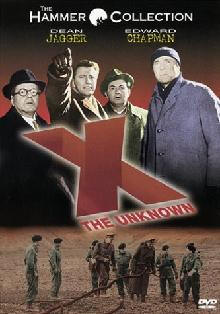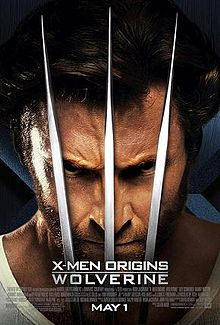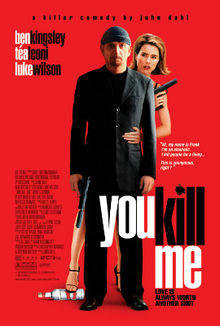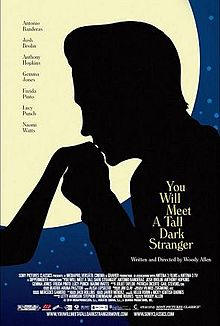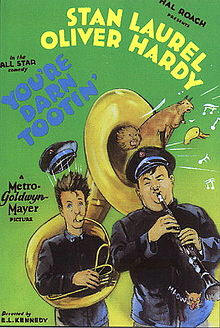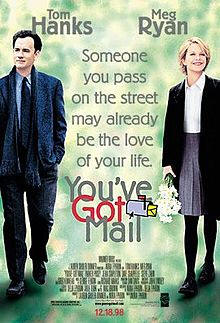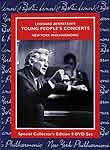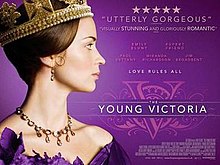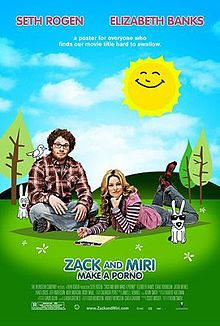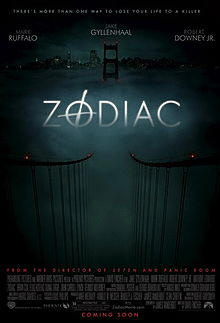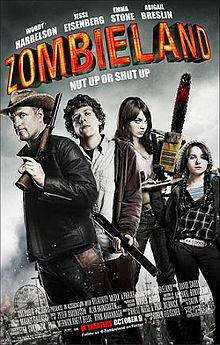|
Movies we've seen © 2004-2013 by John Varley; all rights reserved |
X-Y-Z
|
X the Unknown (1956) I expected trash, and I was surprised. It was intended to be a sequel to The Quatermass Xperiment (US title: The Creeping Unknown), but the author of the Quatermass stories refused to let the name be used. The science, of course, is just gibberish, but the production looks pretty good, the script is miles ahead of American horror pictures of the time, and the acting is competent. The British are just better at this sort of thing, bringing a sense of realism even to an outlandish situation. X, when we finally see it, is a less-convincing version of the Blob, but as this is in black and white it doesnít seem to matter all that much. IMDb.com X-Men Origins: Wolverine (2009) Second feature At the Drive In with Night at the Museum: Battle of the Smithsonian. IMDb.com X2 (2003) Xtra stupid. Even dumber than the first one. I wonít watch the third. IMDb.com Y tu mamŠ tambiťn (Mexico, 2001) (Rough translation: Soís your mother. Or even better: Yo mama!) On the surface this is a stoner road trip: Tenoch y Julio can a la playa. Two Mexican teens, one very rich and one middle class, get involved with a woman 10 years older and set out in an old car for the beach. There is much talk about sex, and she has sex with both of them. She has a secret. But thereís more going on here. From time to time the sound goes off and an omniscient narrator gives us details of things that have happened along their route. We get the point: the divide between these well-off kids and ordinary Mexicans is deep and wide. Personally, Iíd have been terrified on this trip, with fascistic soldiers all along the way, but these kids are used to it, and hardly even see all the side dramas through their car windows. Itís a good point to make ... but what is it doing in this movie? It simply stops what was, to me, the main story, which is a character study of the three. The movie canít seem to decide what it wants to be. Iím not saying itís bad, and the director is quite a good one, heís worked in Hollywood on movies as big as the most recent Harry Potter. Apparently a labor of love, but it didnít quite jell for me. IMDb.com Yes (2004) No. I was almost hoping this movie would really, really suck, so I could just leave it at that: my shortest review! Sadly, it's more complex than that, and I'm far too verbose and opinionated to leave this one without a few remarks. The central fact of this movie is that it's entirely in rhymed iambic pentameter. I kid you not. It is delivered so artfully that it was 15 minutes before I was sure of it. I'd catch a word pair and think "Was that an intentional rhyme?" Then I'd catch another. So now I was looking for them, and casting my mind back over the last lines of dialogue: da DAH da DAH da DAH da DAH da DAH. Yup. Iambic pentameter, the language of the Bard. "A horse, a horse, my kingdom for a horse!" "To be or not to be, that is the question." Now, maybe it's just me, but I found it a huge distraction. When I'm hearing Shakespeare I never give it a thought. But when you're doing Shakespeare, you ... well, best not to declaim, in the manner of 19th Century ham actors, but you enunciate. "Speak the speech as I pronounced it to you, trippingly on the tongue." What we have here is what Lee nailed dead-on as "method Shakespeare." Marlon Brando as MacBeth: "Izzisa daggah Izee befo' me? I coulda been da Thane o' Cawdor!" Much of the dialogue in Yes is mumbled, breathed, whispered, and I didn't have a clue. Even worse, some of it is in British accents and dialects so dense that the only word I could make out with clarity was "fookin'." Which is not a word, sadly, which lends itself to the sonnet form. But I'd have left it at "NO" if I hated it, or thought it was a real stinker. It's not. It is a noble experiment (rather like Prohibition), both on the part of writer/director Sally Potter and of all the actors who worked very, very hard to make it all seem natural. I applaud their willingness to take a risk on such chancy stuff. Sadly, the experiment failed. IMDb.com Yes Man (2008) When Jim Carrey picks the right material heís hard to beat. This script is pretty good, though it lacks something in the conflict department. The premise: Heís detached from life, in a dead-end job, his wife has left him, heís always saying no to any invitation or opportunity life offers him. A self-help guru convinces him that what he has to do is say yes! He agrees to say yes! to anything that comes along. Naturally, at first this leads to him being taken advantage of, but not much is made of this, probably wisely. He buys a lot of rounds of drinks, a layabout friend moves in and Jim has to do his laundry, and so forth. The fun comes when by saying yes!, he opens himself to interesting situations and people. There is some truth in this. In my life, Iíve found myself in some wonderful places and met some wonderful people by simply letting life buffet me about as randomly as possible, essentially saying yes! (Iíve also found myself in disasters, but I believe disasters will find you no matter what you do, no matter how responsible you are or how carefully you make plans, so deal with it!) This isnít quite on a par with a similar concept used in what I consider a minor masterpiece, Liar Liar, where he was a lawyer who could not tell a lie (just writing that makes me laugh!), but itís still fun. And itís got Zooey Deschanel, who I love to look at. And itís shot around Los Angeles and has many locations we are familiar with, including the beloved Observatory, and a bar called the Bigfoot Lounge that we pass by at least once a week on our way to Costco. (We love Costco.) IMDb.com The Yes Men (2003) I love movies about con games. It is not true that you canít cheat an honest man, as current phishing schemes are proving (all it really takes is a stupid victim), though 90% of con scams involve someone eager to make a quick buck or who is convinced heís about to cheat somebody else. I also love media hoaxes, in which people who really ought to be more careful are fooled into believing and passing on things they could have discovered to be false with just a tiny bit of research. The Internet has proved to be the best source ever for phony stories and pictures. I get two or three of them every month, from people who never bothered to check. (Try Truth or Fiction. They keep on top of stuff like that, as a public service.) The Yes Men are dedicated media hoaxers. They easily present themselves as representatives of the World Trade Organization and proceed to sell ideas so outrageous, so transparently foolish, that anyone could see they are scams. Right? Wrong. In one prank, aided as all their scams are by professional PowerPoint presentations, phony facts and figures, and sheer brassy presentation, they point out that outsourcing jobs to poor countries is better than slavery, because you donít have to feed your slaves. If America had simply kept the workers in Africa, the Civil War could have been avoided. Nobody in the audience objects to this idea. Theyíre looking for new ways to maximize profits, and this doesnít strike them as immoral. To an audience of college students they outline the new proposal McDonalds is experimenting with called the ReMac. Since the human body does not extract all the available nutrition from a hamburger, they intend to recycle human waste into new hamburgers, up to ten times. Shitburgers. To their credit, the students are outraged at the idea ... but none of them seem to have any trouble believing that the scheme is real. This is alarming in a whole different way. Have we lost that much faith in corporate responsibility? I wish I could say this is a better movie than it is. The idea is great and there are some very funny moments, but the execution is sloppy. These guys needed some help from Michael Moore (who appears briefly) on how to really slam the propaganda home. It looks cobbled together, with too many behind the scenes sequences of the setup. And maybe another scam or two. Not recommended by me, but itís short, and almost worth watching just for one scene. IMDb.com You Kill Me (2007) Iíve enjoyed the films of John Dahl that Iíve seen so far. Red Rock West is delightfully evil, and The Last Seduction is simply one of the absolute best Iíve ever seen. Linda Fiorentino should have gotten an Oscar nominationóand won! This was by far the best performance of 1994, lots better than the winner, Jessica Lange, who I donít even remember Ö only it was shown on TV first, and thus was ineligible. Rounders was good, too. He tells hard, relentless stories that donít cheat the viewer, and that is priceless. This time he goes for a lighter touch Ö and it almost works, but not quite. Ben Kingsley is a hit man with a bad drinking problem. When he falls asleep while waiting for a man heís supposed to be killing, his boss tells him to join AA. He does, reluctantly, in denial, and some of these scenes are funny, where heís talking about his old job. He meets and falls for Tťa Leoni, who Iíve loved in films like Flirting With Disaster. Hereís a very beautiful woman whoís good with comedy, something just a little off-center about her. I guess the big problem was the chemistry wasnít there for me. Sheís 41 and gorgeous, heís 64 and Ö not. Heís not very charismatic, either. I donít know why she liked him. IMDb.com You Will Meet a Tall Dark Stranger (2010) There is some variety in Woody Allenís films, in spite of what people say. He has stepped out of his exploration of a certain type of dysfunctional individual or family and their self-examining relationships to do films that are somewhat different, at least in format and genre. The Purple Rose of Cairo comes to mind, and Zelig, and Bullets Over Broadway, and Radio Days. But there is one thing in common with almost all his films, all his characters, and that is money. The people in his movies have it. They never sweat the mortgage or how theyíre going to feed the children or keep their low-paying job. Some of them are wealthy, but most inhabit that hard-to-define zone between wealthy and middle-class. Upper middle? Lower upper? On-the-way-upper? Not yuppie, because many if not most are not really young. But their problems are internal. Relationships. Existential angst. The search for oneís self. They may get themselves into fixes, many of which canít be remedied by money, but mostly they talk. They are educated, smart, artistic. Virtually all of them are college graduates. And they talk. And talk. The good news is that their talk is usually interesting. Quentin Tarantino is the master of ďstreetĒ dialogue, and so is Woody, but itís a different street. Like, Park Avenue. And please donít think Iím complaining. I usually find his films entertaining and insightful Ö though sometimes itís the same old insight. God knows we need a respite from time to time from the endless, pointless action most films have deteriorated into these days, and Woody is the most reliable refuge. That said, some of his films are more interesting than others. I get the impression that he is so determined to make one film every year that he sometimes goes with one that isnít really that strong, when he really ought to wait for a better idea. This one falls into that category, not one of his strongest, and has the added burden of being nothing more than a slice of life, leaving almost everything hanging in the end. I donít demand that things be wrapped up neatly, but Iíd have liked a little more closure here. IMDb.com Youíre Darn Tootiní (Silent-1928) Yet another Laurel and Hardy ďtit for tatĒ howler. The beginning isnít too interesting, with the boys playing in a band. (Odd subject for a silent film, but remember, there was always a piano player in the pit.) But they finally get into a brawl tearing each otherís pants off, which soon escalates to involve everyone on the street. IMDb.com Youíve Got Mail (1998) Here is Hollywoodís third take on the play Parfumerie by Miklůs LŠszlů, after The Shop Around the Corner and In the Good Old Summer Time. Brief recap: A man and a woman work together in a store, donít like each other, but each is corresponding with an anonymous pen pal whom they adore. Turns out they are each otherís pen pal. They fall in love. The end. This one works some major changes while leaving the basic concept alone. They meet in a chat room and write emails to each other. They donít work together; she runs a nice little childrenís book store called the Shop Around the Corner, he opens a mega-store Barnes & Noble Ö sorry, ďFoxĒ books, around the corner. Deep discounts. Deep trouble. Loyal long-time customers promise to stick with her. Of course, they donít, and she is run out of business, as so many small bookstores have been. They fall in love. The end. Leaving aside for the moment whether or not you would fall in love with the prick who killed your lifeís work, a shop that had been in your family for almost 50 years Ö this all works very well. In this version much more attention is paid to the messages themselves, and I think that was wise. In the center of all three movies is one pivotal scene that is practically identical. They are going to meet in a restaurant, he becomes aware of who she is, he plays a bit of a game with her. They both begin to have a bit of respect for the other. Honest, they pretty much pulled pages of dialogue from the original script for both re-makes, and itís a lot of fun to see how the three different pairs play it. Tom Hanks and Meg Ryan are the equal of Jimmy Stewart and Margaret Sullavan, and thatís high praise from me, indeed. I was wondering about changes in technology after 11 years, which is a geological epoch in computer time. Surprisingly, there isnít all that much. They both use laptops, thicker than todayís models and no doubt 1/100,000th the internal capacity, but most everything else could have been done today Ö with one exception. Remember AOL? (Remember the Stanley Steamer, the Wright Brothers Flyer, switchboard ladies, Pullman porters? Remember dial-up connections? Yeah, I know AOL is still around and some people must still use it, as every once in a while I get an email from someone with an @aol.com address, and there must be hinterlands where dial-up still reigns, but Iíll bet a lot of young people today would have to have that whistling sound while the connection is made explained to them.) Like many of you (Iíll bet), I had AOL when I first got online, and I recall it with a bit of nostalgia Ö the same sort you have when you recall walking 10 miles to school each day through 6-foot snowdrifts. I was just wondering what AOL looks like today, so I googled it (a verb that didnít exist in 1998) and got a screen across which some animated penguins promptly marched, trying to sell me something. That wouldnít have happened with AOL Version 3.1óit took most of the day just to load the frigginí home pageóand that lack of aggressive advertising pop-over is something I do look back on fondly. Do any of you ever buy anything because of an online ad? If so, Iím ashamed of you. I make it a point of pride to find that little CLOSE X hidden away in a corner, never waiting for the page I wanted to load 15 seconds after this ďwelcomeĒ screen, and never, never, never looking at whatever that welcome screen is selling. Never! Now, something else I have to bring up, because it makes me uncomfortable. I canít really say this romantic comedy has a happy ending. Her little bookstore does go under, and the corporate Goliath wins. Okay, she becomes an author of childrenís books, but how many people can do that? Many of us have watched in alarm over the last decades as store after store closed, and the soullessóbut very nicely appointed, complete with Starbucks insideósuperstores spread like cancer. First it was Walden and Brentanoís (and I was happy to see them swallowed up by Borders; take that, you stinking mall stores, somebody outdid your old business model!), then it was Barnes & Noble and Borders. You canít deny they are pleasant places, though just try to find somebody who actually knows something about books. And hereís the thing. I shopped at all those stores. Iíll bet most of you did, and do, too. Iím no better than the Upper West Side people who assured Meg Ryan theyíd stay faithful, and then walked by with big Fox Books shopping bags. What are you going to do? Theyíre cheap! I did my best to buy mysteries at Murder By the Book, and SF at various specialty stores, but I canít claim I was consistent. Now where do I buy most of my books? At the most soulless place of all: Amazon.com. Again, what are you going to do? I go to Amazon and maybe the book I need is selling for one cent (plus $3.99 S&H, but still). Plusóand this is even more importantóthey have the book. Just about anything you want, they have it, or one of their associates does. I have found books in 10 seconds that Iíd been seeking for decades. When at all possible I buy from one of the associates Ö but still. But still. These corporate great white sharks have driven countless book-loving booksellers out of business, and Iíve never gotten the impression that Amazon loves books. On the contrary, they donít give a shit about books. If there was more money in cheese, theyíd sell cheese instead. Hell, they do sell cheese, and clothes and jewelry and shoes and toys. Once again, low price and convenience trumps soul and tradition. I hate it, and I participate in it. If you donít, my hat is off to you. The thing is, itís a lot easier to spend in line with your emotions, your feelings, your preferences, your politics, if you donít have to count your pennies. Even easier if you donít have to count your dollars. We refuse to shop at Wal-Mart, knowing we could save money if we did shop there, but thatís about as far as we can afford to take it. Itís very sad, and it makes me angry and ashamed Ö but there it is. IMDb.com Young Adam (2003) Based on a book by the Scottish Beatnik Alexander Trocchi. (Iím sorry, that phrase just makes me laugh, I see a guy in a kilt and a beret. ďHoot mon, daddy-o!Ē) Ewan McGregor is a deck hand on a canal barge and has affairs with various women. In the process he is faced with a moral question, and ducks it, existentially. Nice to watch but not my thing. Best thing in it is Tilda Swinton, a chance-taking actress Iíve seen in several good things before. IMDb.com Young Adult (2011) Iíve seen a lot of movies about toxic prom queens, but few as well-written (by Diablo Cody) and acted as this one. Charlize Theron left her crappy little home town after graduation and set up in the big city, ghost-writing a series of crappy novels for teenage girls. Now sheís 37. She still has her looks, but that wonít last much longer, and nothing else is really going right for her. Sheís an alcoholic, and the young adult series is being cancelled. She gets a baby announcement from her old beau back home, and suddenly gets it in her head that she and he were destined to be together. So she goes home and sets about trying to break up his family. She doesnít have a clue. At one point I really feared that she might kill the wife and baby, thatís how deranged she has become. She is such a narcissist that I really think she would be capable of it, especially with a few drinks in her Ö which is pretty much all day long. There is one man who sees all this, tries to befriend her, tries to stop her before she destroys either the family or herself. This part is superbly played by Patton Oswalt, someone Iíd never heard of before. Apparently heís a stand-up comic. He was the short, fat guy who had the locker next to Charlize in high school. Naturally he worshipped her; naturally she never noticed him. He is one of Diablo Codyís best creations, a man who was savagely beaten and crippled by schoolmates because he was gay. Only he wasnít gay, and as soon as that came out, why, it was no longer classified as a hate crime. (Which is one reason I am opposed to ďhate crimeĒ laws. Crime is crime, and fuck the motive.) The media furor went away and he was left to cope with a life on crutches, and dysfunctional genitalia. He was, as Charlize says, ďthe hate crime guy.Ē What awful irony. Charlize is wonderful in this role. Itís impossible to like this woman, but it is possible to feel sorry for her as she blunders through the small town. There are some scenes that are hard to watch without cringing, but they are honest and all the more devastating. And with all that, you might be surprised to know that a lot of it is darkly, bitingly funny. I highly recommend this one. IMDb.com The Young and the Dead (2000) What a stroke of luck to have happened on this title. We have visited the Hollywood Forever cemetery, it's about a mile from where I'm writing this, and seen the graves of all the celebrities there and much of the rest of the place. What we didn't know is that, by the late '90s, the con-man who had owned the place (and refused to allow Hattie McDaniel to be buried there in 1952) had let it get into disrepair. Then it was bought by a young man from the Mid-West, Tyler Cassity, and taken over by him and a group of his yuppie friends. They had big dreams. They cleaned it up and planned to take it into the 21st century with 15-minute documentaries on the deceased that could be called up on kiosks around the grounds, or even accessed through the Internet. I just went to their website and sure enough, they have sample bios of some of their clients available for viewing. I don't know if these are videos of dead people or "pre-need," as they say in the trade. (In our cemetery rambles we've seen headstones for couples with no date of death on them; creeps me out. No way I want to see my name on a tombstone, but I guess some people find it reassuring.) They are professionally produced compilations of still photos and home movies, with music sound tracks or narration by the recently- or eventually-to-be-deceased. One guy is/was a drag racer. His video is almost all cars. It all sounds very new-age and weird, but these yuppies seem to have a respect for tradition, too. They had a Halloween party on the grounds, and they keep up the yearly tradition of a celebration on Rudolph Valentino's birthday. They aren't like nearby Forest Lawn, which insists on nothing but real flowers. People can decorate graves with whatever they want. The film didn't mention it, but there is one section along the east wall that is almost entirely children's graves, and most of the names are Hispanic. We saw one mourning woman there with her two other kids, and I really doubt she could afford a plot, so we assume some sort of atonement is going on for Hattie McDaniel (they put up a stone for her), as well as community outreach. That wall just explodes with colorful toys and plastic flowers. It's a heartbreaking place, and yet beautiful. IMDb.com Young Frankenstein (1974) See Top 25 Favorite Movies. IMDb.com Young People's Concerts (1958-1972) We saw this multi-disc set for sale at the Walt Disney Concert Hall downtown, but it was way out of our price range. Then we subscribed to NetflixÖ. What a find this was! I had never seen them, but Lee was a music student studying piano and had watched them when they were new. She had a big crush on Leonard Bernstein, and it's easy to see why. The man was dynamic, charismatic, and good-looking. (Too bad about the gay business.) And whatever he didn't know about music probably wasn't worth knowing. I researched this series a bit, and was surprised to learn that Bernstein didn't originate it. In fact, they began in 1924 under Ernest Schelling, who did them in New York and on tour until 1958, when Lennie took over. Schelling was never the musical director of the New York Philharmonic. I'd like to be able to see some of these shows to see how much Bernstein changed them, but of course television was pretty primitive at the time, and none of the shows were televised. I would be surprised if Schelling's efforts were as insightful and fascinating as Bernstein's performances, because after all Lennie was one of a kind, but I could be wrong. I suspect they were more like "pops" concerts, and played mostly music that would be accessible to younger listeners. Not Bernstein, though. He specialized in challenging stuff. This series contains 25 of the 53 shows he did from 1958 to 1972. The early ones are quite static, visually. Take a look at the cameras of the era, big as a refrigerator and about as mobile, and you'll see why. But the sound quality is amazingly good. I shouldn't be surprised, as I have a series of re-issues of LPs from the Ď50s now available on CD: "Mercury Living Presence" and "RCA Victor Living Stereo," and they are as good as any 99-track digital stuff being recorded today. The very idea of stereophonic sound was new and exciting back then, but how do you mike 110 people with 2, or 4 tracks, tops? Today, you just give everybody a mike, but back then they had to be creative about it, and they found ways to be sure you heard every nuance from every player. Looking around, I found the following titles that are not on this collection:
Anatomy of a
Symphony Orchestra That leaves 11 concerts that I know nothing about, not even the title. Anybody out there know anything about these? IMDb.com DISC ONE
DISC THREE
DISC NINE
Now, Kultur DVD's or the Bernstein estate or CBS, whoever controls the rights ... when do we get to see the other 28 concerts? We're waiting .... The Young Victoria (UK/USA, 2009) There seems to be a genetically mandated need to make one of these ďHistory of EnglandĒ costume dramas about once a year. Sometimes itís ďHistory of France,Ē but itís still the same movie. If weíre lucky there will be some decent acting and a reasonably accurate historical script, and this is a good one. (Though Prince Albert did not get hit when a madman shot at Victoria.) Itís all a matter of if you like this sort of thing. About once a year is enough of them for me, so that works out well, doesnít it? I really do think they are made to show off the work of the costume designer and nail down the Oscar next year. This one worked: Sandy Powell won. We went to the Fashion Institute of Design and Merchandising downtown to see their yearly show of costumes from about 20 films. These were some of the best, though I was more entranced by the foot-high costumes for the little dolls in the stop-motion animated film Coraline. IMDb.com Z (1969) I havenít seen this movie in a long, long time. I remember I liked it, but Iím including it here because I donít have any movies beginning with the letter Z. I promise Iíll look at it again one of these days, and review it. IMDb.com Zack and Miri Make a Porno (2008) This movie managed to do something very odd to me, and Iím groping for words to describe it. I canít say it offended me. I believe Iím impossible to offend with obscenity or profanity; the only words I find offensive are racist terms, and those only when used in a certain way. A black character here says ďniggerĒ a lot, for instance, and it doesnít offend me at all. I canít say it grossed me out, though it seemed to be trying very hard to. I mean, when youíve seen one hilarious girl-shits-in-a-guyís face scene, youíve seen them all. Ho-fucking-hum, right? What could someone possibly put on film these days that would gross me out? I guess it mostly just made me feel tired. This film has an absolute relentlessness about it, a totally awesome lack of subtlety, as if the writer had never come across that word, as if it were in another language. Everything is hammered into you to the point that I began to feel sorry for all those involved. Not the characters, about whom I could not care less. No, I mean the writer, the director, the actors. Their pathetic obsession with sex and dirty words seemed to me to reveal either a terrible lack on their part, or perhaps a belief, on their part, that their audience lacked something. Does the audience need this sort of jackhammer grossness, obscenity, and joyless vulgarity to get a laugh these days? Judging from how well this sort of comedy does these days, I guess the answer is Ö maybe. If thatís all that is given to them, anyway. I can take heart only in the knowledge that when a movie like Little Miss Sunshine, or Lars and the Real Girlóboth movies that donít shy away from obscene language or sexual themes, you will noteócomes along, people flock to see them, too. The difference is that is takes a bit of human feeling and originality to make films like that, and it only takes a joke writer with a sophomoric obsession with the word ďfuckĒ in all its possible permutations to make a film like Zack and Miri. And, oh, please, donít tell me that the ending is all warm and fuzzy and rejects the callous insensitivity shown by every character up to that point. The ending was so obvious, so set in stone, that I could have written it, line by line, about thirty minutes into the film. This is a truly terrible movie, and sadly, it is typical of about half the comedies being released these days. And though the last thing one should expect is any nod to realism in a movie like this, Lee and I independently were offended on some basic level by the sight of people whose power had been cut off burning trash in garbage cans in their living room to keep warm. Thatís a good way to either suffocate, or burn the house down. Would that either one had happened. It would have made a more satisfying ending. IMDb.com Zathura (2005) Based on an illustrated childrenís book by Chris van Allsburg, author of Jumanji, which was only a so-so fantasy film, and The Polar Express, which was a damn good one. Iíve never seen any of these books, so I donít know how faithful the movie versions are. I didnít realize it, but this is a sequel to Jumanji. There is a central problem with this film, at least for me and Lee. Two brothers are seriously pissed off at their parents for divorcing, and behave even more like assholes than boys their age typically act. For more than half of the movie, as their house crumbles around them when they play this mysterious game that leaves them floating in some outer space universe with breathable air, they bicker, they shout, they whine, they rail at each other. Obviously the lesson will be that they have to learn to work together to survive ... but in the meantime, they are as obnoxious a pair of little pricks as Iíve ever seen in a movie. I worked up such a serious dislike for these rugrats that it was hard to try to like them when they began to learn the lesson. But it did perk up a bit toward the end. Look for the arrival of the ďstranded astronautĒ for things to start to look up. If you can make it that far. For us, it was a close thing. IMDb.com Zelary (Czech, 2003) ... is a very small rural town in Czechoslovakia in 1943. A city woman, a nurse who used to be a medical student before the Nazis arrived, is involved in the Resistance and has to flee the Gestapo and hide out with a man whose life she saved by giving blood when he was injured at a sawmill. She hates it at first, but learns to adjust. This is familiar territory, we know she will fall in love with the big, bluff, kind man twice her age, and we know there will be perils to face. But itís very well done, if a bit long. The two main characters are engaging, and the actors are uniformly good. A warm-hearted story beautifully told. Oddly, it was filmed in the same hills and valleys where Cold Mountain was made, and tells a similar story. IMDb.com Zero Dark Thirty (2012) Here we have a movie that went from favorite to also-ran at the Oscars in the space of about a month. Which is sad, because I regard the winner, Argo, as nothing more than a pretty good movie, while this is a masterpiece. And it was all over politics. Specifically, over two questions. The questions are, did this movie glorify torture and/or assert that itís a good way to get information from a prisoner? And two, did it glorify the raid that killed UBL, CIA-speak for Usama bin Laden? The answers are (and this is all IMHO) no to the first, and yes to the second. And to the second, I say hip-hip-hooray. If ever a sonofabitch needed killing, it was him. Does it worry me that he didnít get a fair trial? Not a bit. We really are at war with Al-Qaeda, September 11 was an act of war if ever there was one. Nobody gave those 3000 innocent people a fair trial. (Did 9/11 justify our idiotic war in Afghanistanóthe longest in American history, by the wayómuch less the even more idiotic war with Iraq? A whole nother question, to which I answer a resounding NO!) Itís a shame that instead of pointing out the filmís many glories, I feel I have to address the politics first. But so it goes. The first part, say the first half hour or so, shows the torture of prisoners by American CIA agents, and itís just as ugly as you expected it would be. It consists of waterboarding, and in one case stuffing a man into a tiny box. Food is withheld, men are strung up by their wrists. People who are opposed to torture (and I am emphatically one) point out three reasons it should not be done. The first, and the strongest to me, is simply that it is morally wrong. Hear, hear. I donít want anyone tortured in the name of me, the American People. Itís flat-out wrong. Reason two is that if we torture, if we give up that moral ground, we canít really object if others torture our own prisoners of war, and in fact we have given them license to do so. Works for me. Only if our own hands are clean can we stand up and condemn what is done to our own men and women prisoners of war. The third is a lot more iffy. They say that it yields bad information. This idea is endorsed by no less than the FBI, who were appalled at the things the CIA was doing in their black sites. And it is certainly at least partly true. At some point even the toughest person can be broken, and will say absolutely anything just to make it stop. He will make stuff up. He will agree with anything you tell him to agree with. In short, it does not work. Well Ö Actually, it can work. A nasty little secret, but in the hands of a skilled torturer, good information can be obtained. This doesnít make it the right thing to do, not even close, but I just canít let the assertion that torture never works go unchallenged. It can work. Sorry, but it can. So we see the torture, and so does Maya (Jessica Chastain, and I havenít seen Jennifer Lawrence in The Silver Linings Playbook yet, but she will have to be insanely good to be better than this performance), a newly-minted CIA agent, who I believe is a composite or maybe even totally made-up character. She sees it, she grimaces and looks away, but she never objects. Not that it would have done any good, being one person and a rookie, but my impression is that she has no huge problems with what theyíre doing. Information is obtained, and here was another controversial point. Were the writer, Mark Boal, and director, Katherine Bigelow, implying that information obtained by torture was critical or even instrumental in finding UBLís hideout? Well, I really canít tell you. One reason is that the sound system in the theater was not the best, not really loud enough, and with my failing hearing and no subtitles I missed some dialogue. The other is that it was all pretty complicated, and I couldnít follow all the details. But my impression was that the first hour of the movie was mostly devoted to the fact that nothing was working very well, that the info they obtained through ďenhanced interrogationĒ was getting them nowhere. What I can say for sure is that, in the second hour, it clearly was old-fashioned tradecraft that led them to UBL. Bribery (with a high-end Lamborghini!), then some high-tech cell phone work and some very low-tech Pakistani assets watching for a white SUV to pass, until they had the UBL compound. All this was handled very well, fascinating to watch. Then we come to the last half hour, where the actual raid on the compound was re-created. It was riveting. How do you do that when everyone knows exactly what happened? You do it by fanatic attention to detail, by amazing camera work, and by creating an atmosphere of extreme tension. There is no music to hype it up. Itís all exactly what you would have heard if you were there. The Navy Seals in all their creepy high-tech gear work together like a fine machine. They have trained and trained, and are ready for every eventuality. One of the super-secret stealth helicopters crashes? No problem, theyíve come prepared to blow it up so no one can study it. Room by room they move through the building until they come to the spiderís lair, and they stomp on him. And good riddance to one of the all-time monsters. This was one of the best action-thrillers Iíve ever seen. IMDb.com Zhou Yuís Train (Zhou Yu de huo che) (China, 2002) We see a great many foreign films. I get the impression that, taken as a whole, films from other countries are more thoughtful, better written, more likely to be out of the box than films from the US. Hollywood makes some great movies, no question, and we are the masters of the big budget extravaganza ... which is often just awful. But something else is at work here. Only the best films from other countries are likely to get much of a release in the US. I tend to forget that all countries produce a heck of a lot of crap that we never see. They also produce routine potboilers. If they have a bankable international star in them, they will probably be exported. This is one of those. It stars the stunningly beautiful Li Gong, who is also a great actress. She has several Hollywood movies in the pipeline. But Zhou Yuís Train is an empty exercise. Because it is so pretty it took me a little while to realize how pretentious it was. Itís only 90 minutes long so we stuck it out, but it didnít get any better. Needlessly confusing, needlessly arty, and quite boring. Donít waste your time. IMDb.com Zodiac (2007) I was living in San Francisco while the Zodiac was running loose Ö and for that matter, he may still be running loose, no matter what the author of the book this screenplay was based on may think. I remember how it all played in the newspapers, and how people not yet accustomed to this sort of serial killer reacted to it. (These days, of course, weíve seen so many serial killers weíre almost blasť about it.) I remember when the cab driver was killedówhich turned out to be the last murder that was unquestionably his. I remember reading Zodiacís statements in the newspapers. And that was what was special about Zodiac, I guess, because despite what thriller writers would have you believe, few of these people actually taunt the police with messages. And even fewer get away with it. Zodiac is the D.B. Cooper of serial killers. He vanished, no one was ever caught or punished. Like Jack the Ripper, who still fascinates a lot of people. (Not me.) In the course of this movie mention is made of the fact that Zodiac wrote to say he had not been responsible for the bomb that went off at a police station on February 16, 1970, and killed an officer. That really brought me down memory lane, because I was living at 1735 Waller Street in San Francisco at the time. Half a block away was Stanyan Street, and half a block into the park from there was the tiny Golden Gate Park police sub-station. So I was a block away when that bomb went off, and I still remember the huge shock wave that rattled our windows, and all the neighbors coming out into the streets, and the wailing of sirens as hundreds of cops arrived and sealed the area off. I donít remember now who took credit for it or if they were ever caught, but everybody thought it was some political assholes like the SDS, and the cops were very tense. Not a good night for a longhair to stay out on the street, and I didnít. Enough reminiscence. This movie is very well made, though I think 20 minutes could easily have been trimmed from it. It is not like a normal serial killer movie, in that it stays pretty close to the actual story, and so the central problem becomes the same one faced by the makers of The Day of the Jackal. How do you build suspense when you know the outcome? We know going in that de Gaulle will not be assassinated, and that the Zodiac will not be caught. So this is going to be a story of failure, and thatís a tough assignment. You do it by making the process so fascinating that you are kept on edge and interested, in spite of knowing the outcome. This movie does a good job of that. Itís taut and intelligent, and itís really not about Zodiac at all Ö which is good, because we really know next to nothing about him. The real subject of Zodiac is obsession. Zodiac is driven by his obsession, whatever it was, and the people around the story were driven by theirs. It drives one reporter deeper into drink, and pretty much burns out two cops. But the real maniac here is the author of the book Zodiac (and later, several others, quite sensationalistic if their titles are any indicator), one Robert Graysmith, a cartoonist, of all things, for the San Francisco Chronicle. Iím old enough to remember the years after JFKís assassination, and how an entire conspiracy industry grew up around it. For twenty years I followed some of them, with a level interest far from obsession, but with the uneasy feelingóshared by the vast majority of Americansóthat we didnít get the whole story. I finally concluded that we never would get it. Human knowledge is not perfectible. Study any event long enough and you will find things that donít seem to fit in, things that might be lies, imperfect recollections, and the farther away you get from an event, the less you can ever know about it. Weíre seeing it today with the 9/11 conspiracy industry. There is also a conspiracy industry surrounding the data on global warming. People get into these things and wonít let go. They preach on Internet street corners, wild-eyed, waving their hand-printed signs, flecks of spit flying from their mouths, true believers. Thereís no point in arguing with them; you just become part of either the poor deluded masses, or allied to those who perpetrated the vast cover-up. For reasons I doubt even he could explain, Graysmith slipped into this level of obsession about Zodiac. It seems to have consumed his life for twenty or more years. I guess the good thing you could say about that is that it led him into a career a lot more profitable than editorial cartoonist. Now he sells books purporting to solve crimes that have high public profiles. But it also seems to have wrecked his marriage, and made him a pest to just about everyone he ran into. Do you really want a friend who is forever grabbing you by the shirt and shouting his nitpicking theories in your face? Often in a cop thriller I get pissed off at the wife who wonít stand by her husband when heís trying to do the right thing. Itís such a clichťd scene, isnít it? Darling, either you drop this or Iím taking the children and going to motherís! But what the hero is doing is important, itís going to save some lives. This time I was solidly on the side of the long-suffering wife. She stood it a lot longer than I would have. I kept wanting to shout, Get over it, Bob! Truth does not always prevail. Zodiac has stopped, why canít you? So in the end, though I can say this is a good movie, itís really tough to actually like a movie when the protagonist is acting like an asshole for so much of it. And thatís about half the movie. Obsession can be an interesting subjectósee Hitchcockís Vertigoóand director David Fincher has made a valiant attempt, but in the end I was just tired. IMDb.com Zoombieland (2009) Second feature At the Drive In with The Stepfather. IMDb.com
|
